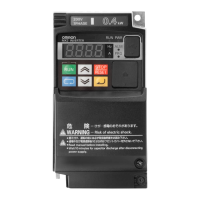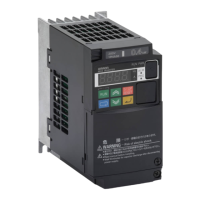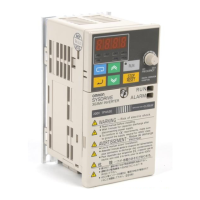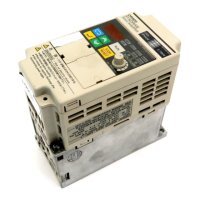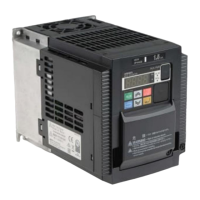6 - 49
6 DriveProgramming Commands
DriveProgramming User’s Manual (I622-E1)
6-7 Timer Control Commands
6
Timing chart
Timer set
Command Description Argument
Starts the timer (k). The the timer counter TC(k)
is started with 0 and incremented every 10 ms
until it reaches <value>. When <value> is
reached, the timer contact TD(k) changes to
ON.
TD(k): the timer output contact of the timer that
you use (range of k is 0 to 7)
Value: any variable or constant
(specified time × 10 ms)
Format
Flowchart method Text language method
↓
timer set TD(k) <value>
Note 1. The timer (k) is started when the “timer set” command is executed. If TD(k) is ON, it is changed to OFF
when the timer (k) is started. After the timer (k) is started, the program goes to the next command.
2. When the “timer set” command is executed, the data of TD(k) and <value> are saved internally. Even
if the variable values set to <value> is changed after the “timer set” command is executed, the opera-
tion of the command does not change.
3. After the “timer set” command is executed, if the same timer (k) is restarted before its processing is
completed, the ongoing processing is canceled and the timer (k) is started with the new settings.
Therefore, create a program so that the timer (k) which is started once is not restarted until its pro-
cessing is completed.
4. You can monitor the data of the started timer (k) with the timer counter variable TC(k). Check the com-
pletion of the timer processing with the timer output contact TD(k) (changes ON at completion).
(1) The timer is in a free-run state.
(2)
The “timer set” command is started.
(3) The delay operation is in progress.
(4) The time elapsed.
(5)
The “timer set” command is started.
(6) The delay operation is in progress.
(7) The time elapsed.
(8)
The “timer off” command is started.
(9) The timer is in a free-run state.
(1) (2)(3) (4) (5)(6) (7)
(8)(9)

